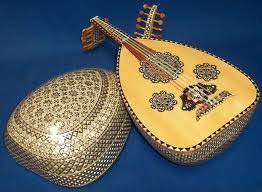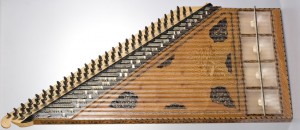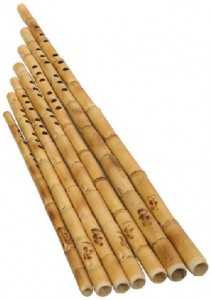April 8, 2014
The Syrian musical tradition is characterized in general as that of the neighboring Arab countries (Egypt, Lebanon, and Iraq) and the crescent moon itself, the importance given to improvisation. The main form is the “taqsim” impromptu prelude to a solo instrument, in free rhythm. Its voice is the equivalent layali, a vocalise the words “yālayl, ya ‘Ayni” (“oh night, oh my eyes”).
The most popular tools are the ud, or Arabic lute (then imported into Italy in 1400, and made a major contribution to Renaissance music).
Oud – taken from HERE
The qanun, a kind of zither trapezoidal or kanun, is a stringed instrument with 78 strings of the classical Arabic tradition. It consists of a trapezoidal zither, with numerous choirs of strings thesis on a soundboard of parchment. The length of the strings can be changed before execution by acting on small metal frets, thus changing the tuning in function of the chosen scale. The strings are plucked by two big horn plectrums.
Qanun – taken from HERE
The qanun has in music teaching Arabic, Greek and Turkish has the same function that the monochord has played in the medieval west: it is a practical tool for learning intervals. It was introduced in the West in the Middle Ages, with the name of Cannon.
Nay, flute straight (dating back to 5000 years ago. Researchers have discovered artifacts in the ancient city of Ur). The ney (a word of Iranian origin) is a reed flute composed of 9 nodes and its holes follow strict mathematical rules, which are useful for the execution of the different maqam (Arabic for place or location).
Nay – taken from HERE
Each maqam describes the “tonal-spatial factor” or set of musical notes, including models and the development of the traditional melody, freeing up the “rhythmic-temporal component” because it is open to the feelings of everyone, even the Andalusians Far West.
The century-old trade between Maghreb (Morocco, Algeria, Tunisia and Makresh;) (Libya, Egypt, and Medioeriente) musical instruments have merged, edited and regenerated, through the Roman Empire and the Maritime Republics, to the empires of the day our.
And everything still passes today in Syria, under the sound of bombs in the country by numerous vocal, ethnic groups and sounds throughout Europe and Asia.
We are happily surrounded by these millennial sound improvisations, where the sun and moon playing in this crescent moon who lives in the Mediterranean.
It is a harmonious mixture that appears in modern Syria and in the Andalusian guitar …. And at the heart of who plays them.
To listen to the guitar Syrian and Andalusian click HERE


